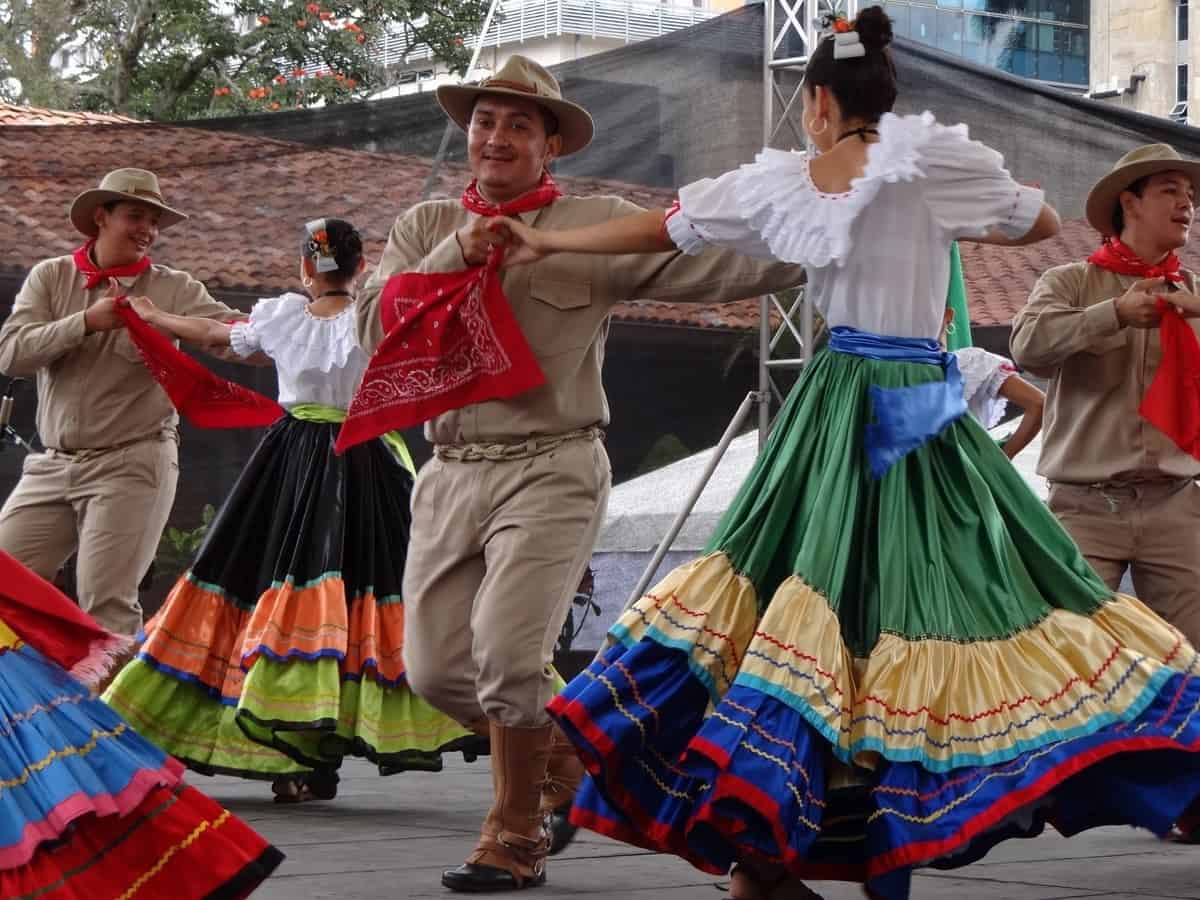The Baile de la Panadera, or the Baker’s Dance, is so obscure that many people who make a point of knowing every cultural event in Costa Rica haven’t heard about it. There are no photos or videos to be found on line. It’s hard to believe that at one time, the Baker’s Dance was practiced all over Costa Rica before it fell out of favor. Like the elusive chupacabra, it was spoken of in certain circles, but rarely seen.
The dance is like a children’s game, but for grown-ups. Dancers hold hands and skip around in a circle to music while one participant, male or female, dances alone in the circle. This dancer wears a hat. Musicians play an important role as do copleros, who occasionally shout “bomba!” The music and dancing come to a halt and the coplero recites a verse about the baker or the bread. Then the dancer with the hat passes it to someone in the circle, who must then dance in the middle. The verses are all four-line coplas and may be improvised or not. Here’s an example:
- Asina, asina los panaderos Sift, sift, bakers
- Que bién que sabes bailar Who know very well how to dance
- Que lo deje bailar solito One is left dancing alone
- Pa’ ver si sabe danzar To see if he (she) knows how to dance
- Asina, acirna la panadera Sift, sift, bakerwomen
- Que bien que sabe bailar Who knows very well how to dance
- Mirá que la harina es poca Look how little flour there is
- Y el pan se nos va acabar And we’re running out of bread
The Baile de la Panadera was a part of all festivities in Costa Rica when wheat was the biggest crop here, and and sometimes it went on for hours. Harvest festivals were popular and always included the Baker’s dance. Both the wheat and the dance came from the Spanish province Extremadura and arrived in the new world not long after the first conquistadores. An early settler called Juan de Cavallon introduced wheat here in 1561 Cartago area, and the crop spread across the country until the 1850s, when coffee began to take over. As late as the 1930s, wheat was grown around the country.
Wheat was an important crop for Costa Rica in the colonial era, supplying bread for the population but also trade in the form of bizcochos (biscuits), which were sent to Panama and Nicaragua.
While the dance seems fun and playful, it was not always so and in Mexico, and was actually denounced before the Inquisition by monk Francisco Eligio Sanchez in 1779 for blasphemy and immorality. It seems that as the Baker’s Dance spread in the new world, it was contaminated by another popular dance called the Baile de Jerigonza, which became more and more frenetic and was apparently used in exorcisms. The Baker’s dance too took on an aspect of sexiness, which, although popular with the people, was frowned upon by the clergy.
The story of how it happened, including some of the forbidden verses, can be found on the Internet in a thesis by Mariana Masera under the title “Un Baile Perseguido.”
I’d say it’s about time for a revival.
Muchas gracias to Dionisio Cabal for the information on the Baker’s Dance.







